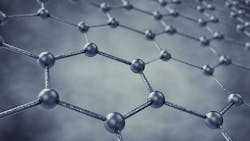Fighting Friction with a Nanolayer of Graphene
Researchers at the Argonne National Laboratory have developed a method of bonding a uniform layer of graphene only one atom-thick directly to steel. In tests, graphene significantly reduced friction and lasted for more than 6,500 wear cycles. For comparison, it takes 1,000 layers of conventional lubricants such as graphite and molybdenum disulfide to last 1,000 wear cycles. The graphene layer continues to reduce friction even in extremely wet or dry environments. Graphite, on the other hand, only works in humid environments, and molybdenum disulfide works best in dry environments.
